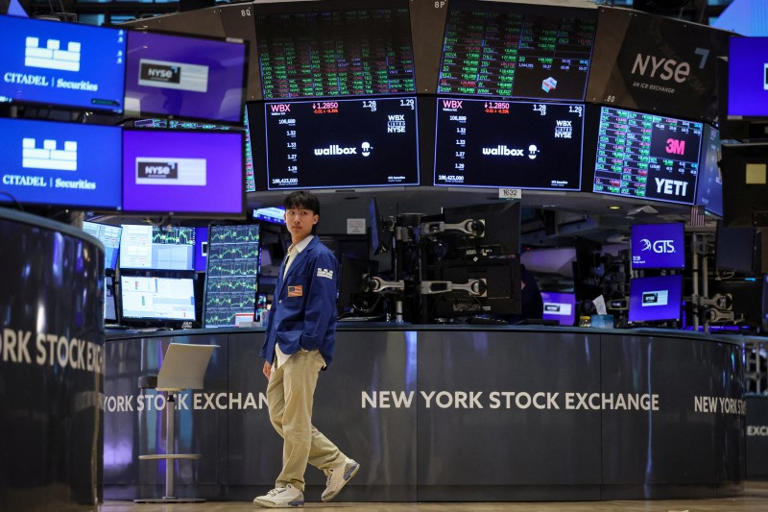On Monday, Wall Street saw a varied performance across its major indexes. The Dow Jones Industrial Average experienced a decline, closing down 140.53 points, or 0.36%, at 39,357.01. This dip contrasted with the upward movement of the S&P 500 and Nasdaq Composite Indexes. The S&P 500 edged up slightly, gaining 0.23 points to end at 5,344.39, while the Nasdaq Composite increased by 35.31 points, or 0.21%, to 16,780.61. The Russell 2000 Index, which tracks small-cap companies, fell by 0.9%, reflecting a broader trend of retreat from small-cap stocks and cyclicals.
James Abate, Chief Investment Officer at Centre Asset Management, discussed the recent market dynamics, noting a significant shift in investor behavior. He pointed out that there had been a notable rotation towards small-cap stocks and cyclical sectors, including financials, which was a popular trade strategy a few weeks ago. However, this trend has since reversed, leading to a decline in the Russell 2000 Index. Abate highlighted concerns about the current economic conditions, suggesting that the market does not yet support widespread growth and stock price appreciation.
Investor Focus on Upcoming Economic Data
The mixed performance of Wall Street reflects a broader uncertainty as investors prepare for crucial economic data releases this week. The focus is on the U.S. Consumer Price Index (CPI) and retail sales figures, which are expected to provide insights into inflation trends and consumer spending, respectively.
The CPI report, scheduled for release on Wednesday, is anticipated to show a 0.2% increase in headline inflation for July compared to June. This would keep the year-on-year inflation rate steady at 3%. Investors are particularly attentive to this data as it will offer clues about future Federal Reserve actions. The Federal Reserve’s monetary policy decisions are highly anticipated, with markets currently divided on whether the central bank will implement a 25 or 50 basis point cut in interest rates at its September meeting. There are expectations for a total easing of 100 basis points by the end of 2024.
On Thursday, the July retail sales figures will be released, expected to show modest growth. Any weakness in these numbers could reignite concerns about a potential consumer slowdown and the risk of a recession. Retail earnings reports from major companies like Walmart and Home Depot, due later this week, will provide further insights into consumer health and spending patterns.
Earnings Reports and Market Reactions
In addition to economic data, earnings reports are also in focus. Starbucks saw a 2.58% increase in its stock price following news that activist investor Starboard Value, which holds a stake in the coffee giant, is advocating for measures to enhance the company’s stock performance. KeyCorp experienced a notable 9.1% rise after Canadian bank Scotiabank acquired a minority stake in the U.S. regional lender through an all-stock transaction valued at $2.8 billion. Conversely, Hawaiian Electric’s stock fell sharply by 14.45% after the utility company raised concerns about its financial stability, indicating potential trouble ahead.
Market Breadth and Index Performance
Overall market breadth was skewed towards declines, with declining issues outnumbering advancers on both the NYSE and Nasdaq. On the NYSE, the ratio was 1.46-to-1, meaning that for every advancing stock, there were approximately 1.46 declining stocks. On the Nasdaq, the ratio was slightly higher at 1.54-to-1.
The S&P 500 saw 10 new 52-week highs and seven new lows, while the Nasdaq Composite recorded 51 new highs and 179 new lows. This reflects ongoing volatility and mixed sentiment within the market.
Conclusion
The mixed performance of Wall Street underscores the current uncertainty in the markets as investors await key economic data and earnings reports. The upcoming CPI data and retail sales figures are expected to provide crucial insights into inflation trends and consumer spending, which will play a significant role in shaping market expectations and Federal Reserve policy. As investors navigate these developments, the focus will be on how these economic indicators might influence future monetary policy and overall market performance.
